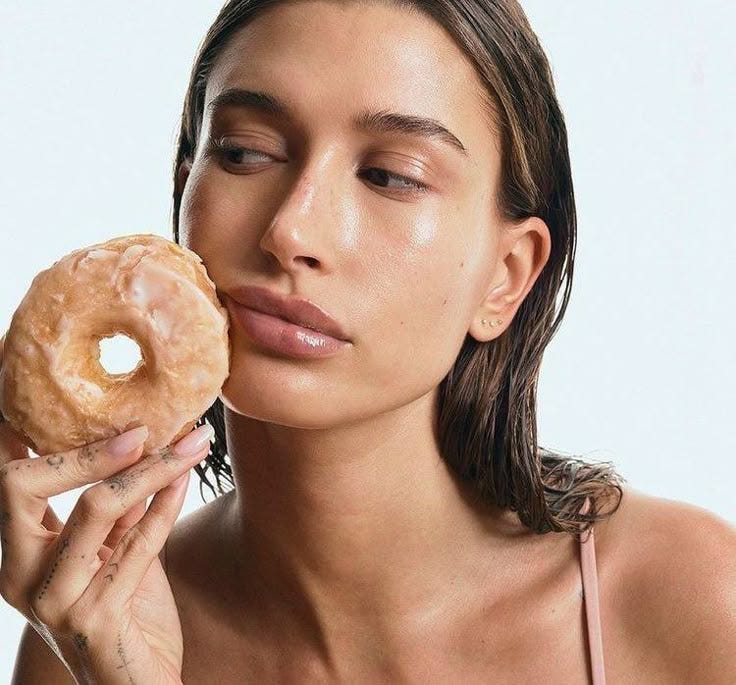Distinctive brands compromising their core identity in the name of relevance...
The pressure to stay relevant pushes even those with distinct taste to dilute it for mass engagement.
Is anyone else watching great brands slowly lose their grip?
Not in a dramatic, headlines kind of way but in the quieter, more subtle choices. The off-brand collab, the trend-led launch that didn’t land and the social-first content that feels... a bit off.
I’ve been paying attention to a shift in our industry: smart, distinctive brands compromising their core identity in the name of relevance.
What some of us figured out a while ago is now hard to ignore, trend culture isn’t just shaping aesthetics, it’s changing brand behaviour and not always for the better.
Creator monetisation has also turned individuals into micro-brands. And this means a lot of people feel a constant need to produce and perform.
Even those with real creative “conviction” are being pulled off-course by the pressure to keep up.
The cycle is exhausting…I’m not one to complain too much but I think we need to talk about this.
Strawberry-glazed nails become quiet luxury, then latte makeup turns into tomato girl summer, only to be replaced by mob wife winter.
In this carousel of aesthetics, something’s gone missing: taste. Not trend awareness but actual taste. That internal quality compass that resists the algorithm and insists on coherence.
But the thing is some brands aren’t just following “the culture” as we like to say. In many cases, they’re following anything that gets them reposted.
So the question isn’t “Are they keeping up?” It’s '“Is what they’re creating even good?”
Let’s talk about it.
From curators to content cycles
Once upon a time, taste was shaped by gatekeepers, designers, editors, legacy brands. Then came the platforms: Pinterest, TikTok, Instagram. Suddenly, trend discovery became hyper-democratised, and personal style turned into a feed refresh.
Now, I’m all for more access, because, as we explored in my post about nepotism, some of the biggest campaigns were created exclusively by the brothers, sisters, daughters, and sons of big marketing execs. They got to dictate who and what we saw and what was considered cool.
But there’s a difference between influence and impact.
On TikTok, a look can go from niche to mass in a matter of days. Creators remix runway shows into GRWMs, a single viral product gets copied, mass-manufactured, and repackaged before the hype even peaks.
The downside of everyone having access (bare with me) is that this speed flattens taste…it rewards immediacy over intention.
Because so many people can now go viral, launch their own campaigns, and set micro-trends, brands are sometimes at the mercy of some really questionable things.
So what does that mean for brands?
If you’re a brand trying to build cultural relevance, the temptation to chase trends is real. It’s a shortcut to virality but here’s the very big long term problem with this: chasing trends gets you attention but for how long?
Being the one to start a trend, now that shows real taste and it’s how you earn longevity.
Spotting the gap while everyone else is chasing? That’s where brand value is built.
But it seems most people aren’t catching on.
Brand strategy used to be about owning a lane, now? It’s more like keeping up with traffic and it’s pretty sad to see.
Take product development.
If you’re launching something based on a TikTok trend, the shelf life is already counting down. The average lifespan of a TikTok trend? Just 3-7 days. Compare that to the 6-18 months it takes to develop and distribute a product….the maths doesn’t add up.
And when brands constantly pivot to stay on-trend, they dilute their identity.
Trends get you the first sale, taste gets you the second and the third.
Case study: Rhode
Hailey Bieber’s skincare brand, Rhode, is a perfect case study in how to own a niche and in her case, it’s food.
From the start, Rhode has leaned into edible aesthetics: glazed donut skin, peptide lip treatments, and launches named after desserts and drinks (think vanilla, strawberry glaze, and most recently, jelly bean and boba). The packaging, the content, even the campaign shoots, everything feels like it could sit on a café counter and a beauty shelf.
This was a branding move that makes Rhode instantly recognisable not just as a skincare line, but as a sensorial experience. She’s blurred the line between beauty and food marketing in a way that feels playful but deliberate.
Most skincare brands talk about actives and efficacy, Rhode does that too but through the language of indulgence and flavour. It’s marketing that feels like lifestyle, not hard sell.
So far, the approach has worked.
Will Rhode become a legacy brand? Too early to tell but if you associate Hailey with glazed skin and dessert-flavoured lip treatments, she’s done her job well.
Taste vs. trends: who else is doing what?
SHEIN is the poster child for trend-chasing: low prices, rapid drops, and zero commitment to any singular aesthetic. It works, for scale. But trust and loyalty? Not part of the model. Which begs the question: if another competitor came along doing the exact same thing, would people switch? Absolutely.
Compare that with Uniqlo: consistently minimal, functionality-first, not trying to go viral but quietly building a cross-generational customer base.
So what’s fuelling this shift?
Some of it’s economic.
Trend-chasing is a symptom of late-stage capitalism, more drops, more SKUs, more content, more everything. When attention becomes currency, aesthetic becomes a commodity.
When we say "attention becomes currency," it means: attention has turned into a measurable, tradable resource with actual economic value in our digital economy.
The rise of creator monetisation means individuals are now micro-brands. The pressure to stay relevant pushes even those with distinct taste to dilute it for mass engagement.
And some of it is algorithmic, the feed doesn’t reward nuance, it rewards what’s new, what’s loud, what loops well.
So where do brands go from here?
Here’s one framework to consider
Trend-led brands prioritise speed, volume, and visibility.
Taste-led brands prioritise clarity, identity, and longevity.
Smart brands find their coordinates somewhere along this line, responsive, but not reactive, culture-savvy, but not culture-chasing.
Because legacy isn’t built by going viral, it’s built by being remembered.
Until next time, keep listening, keep learning, and keep evolving.
And make sure you digress often. Curiosity is key to winning in this game.
Charlotte
If you missed last week’s newsletter read it here:
The rise of the discernment premium
It’s almost wild to think that, on a daily basis, we come across around 10,000 ads.









Great piece! It’s wild how many clients reference RHODE, yet struggle to understand why it worked for RHODE—and why that same approach won’t necessarily work for them.
Love! I think Rhode is interesting bc in a way they did follow trends, the whole food thing was used a lot in fashion (Burberry pasta, Jacquemus etc). I guess it’s the consistency that works longer term as it builds recognition.